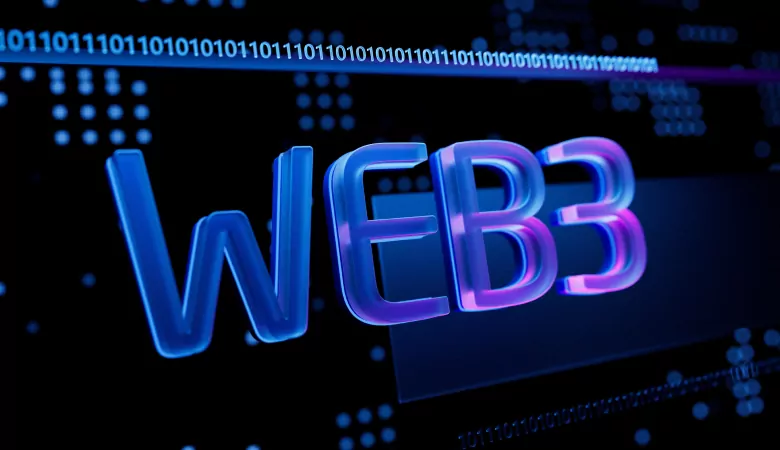The financial landscape is undergoing a profound transformation, driven by the rise of Decentralized Finance (DeFi) and Web3 technologies. These innovations are challenging the traditional financial system by removing intermediaries, enhancing transparency, and creating open financial ecosystems. As blockchain adoption grows, DeFi and Web3 are redefining banking, lending, asset ownership, and even monetary policy. In this article, we explore how these technologies are reshaping traditional finance and what the future holds.
The Shift from Centralized to Decentralized Finance
Traditional finance has long been dominated by centralized institutions such as banks, payment processors, and regulatory authorities. While this system has provided stability, it has also led to high fees, slow transactions, restricted access, and inefficiencies. DeFi, powered by Web3, offers a new paradigm by enabling peer-to-peer financial services without the need for intermediaries.
Key ways DeFi and Web3 are reshaping finance:
- Disintermediation: Eliminating middlemen in transactions, reducing costs and delays.
- Financial Inclusion: Providing access to banking and investment services to the unbanked.
- Transparency & Security: Blockchain-based smart contracts ensure open, auditable transactions.
- Programmability: Financial services can be automated using smart contracts, reducing fraud and inefficiency.
Key Components of DeFi and Web3 in Finance
1. Decentralized Lending and Borrowing
Traditional lending requires intermediaries like banks, which set terms, manage risk, and profit from interest rate spreads. DeFi lending platforms like Aave, Compound, and MakerDAO allow users to lend and borrow crypto assets without a bank by using smart contracts.
- How It Works: Users deposit crypto assets into a liquidity pool and earn interest. Borrowers provide collateral to access funds.
- Benefits: Instant loan approvals, lower costs, and no credit checks.
- Challenges: Volatility of crypto assets and smart contract risks.
2. Decentralized Exchanges (DEXs) and Trading
Decentralized Exchanges (DEXs) like Uniswap, SushiSwap, and Curve Finance allow users to trade cryptocurrencies without a central authority.
- How It Works: Users swap assets through liquidity pools without needing an intermediary.
- Benefits: Lower fees, no account restrictions, and improved privacy.
- Challenges: Lower liquidity compared to centralized exchanges (CEXs) and potential regulatory scrutiny.
3. Stablecoins and Digital Payments
Stablecoins, such as USDT (Tether), USDC, and DAI, bridge the gap between traditional and decentralized finance by maintaining price stability while operating on blockchain networks.
- Use Cases: Remittances, cross-border transactions, and hedging against volatility.
- Web3 Payment Solutions: Platforms like Strike, Flexa, and Celo are integrating stablecoins for real-world transactions.
- Challenges: Regulatory concerns and centralization risks with fiat-backed stablecoins.
4. Tokenization of Real-World Assets
Tokenization involves representing real-world assets like stocks, real estate, and commodities as blockchain-based tokens.
- Examples: Platforms like Synthetix and RealT allow fractional ownership of real estate and synthetic stocks.
- Benefits: Increased liquidity, 24/7 trading, and global accessibility.
- Challenges: Legal complexities and regulatory compliance.
5. Web3 Identity and Decentralized Credit Scoring
Web3 is enabling decentralized identity solutions that improve financial access.
- Projects like: Worldcoin and Civic offer self-sovereign identity without relying on traditional credit bureaus.
- Decentralized Credit Scoring: Instead of relying on banks, DeFi platforms analyze on-chain behavior to determine creditworthiness.
- Challenges: Privacy concerns and resistance from legacy financial institutions.
The Challenges of DeFi and Web3 Adoption
Despite its potential, DeFi and Web3 adoption in traditional finance faces hurdles:
- Regulatory Uncertainty: Governments are working to define how DeFi and crypto assets fit into existing financial laws.
- Security Risks: Smart contract vulnerabilities and hacking incidents remain a major concern.
- User Experience (UX): Complex interfaces and lack of education hinder mass adoption.
- Scalability Issues: Blockchain networks must handle higher transaction volumes efficiently.
The Future of Finance: What’s Next for DeFi and Web3?
The financial industry is at a turning point, with traditional institutions beginning to integrate Web3 innovations. Some trends shaping the future include:
- Institutional DeFi: Large banks and hedge funds exploring decentralized lending and blockchain settlements.
- CBDCs (Central Bank Digital Currencies): Governments experimenting with blockchain-based national currencies.
- Hybrid Finance (HyFi): A blend of traditional finance and DeFi, where regulated institutions interact with decentralized protocols.
- Improved Interoperability: Solutions like Polkadot, Cosmos, and Chainlink enabling seamless integration between blockchains and legacy financial systems.
Conclusion
DeFi and Web3 are not just disrupting traditional finance—they are redefining it. By removing intermediaries, enhancing security, and providing financial access to billions, these technologies hold the potential to create a more open, transparent, and efficient financial system. While challenges remain, the momentum behind DeFi and Web3 suggests that the future of finance will be decentralized, inclusive, and borderless.
As adoption grows, the question is no longer whether DeFi and Web3 will reshape finance, but how quickly traditional institutions will adapt to this new paradigm.
Lilian Bradfield is a cryptocurrency writer and blockchain researcher with a strong focus on Web3 innovation, decentralized finance (DeFi), and the evolving regulatory landscape. With a background in financial journalism and years of experience covering emerging technologies, she brings a keen analytical perspective to the fast-moving world of digital assets.



